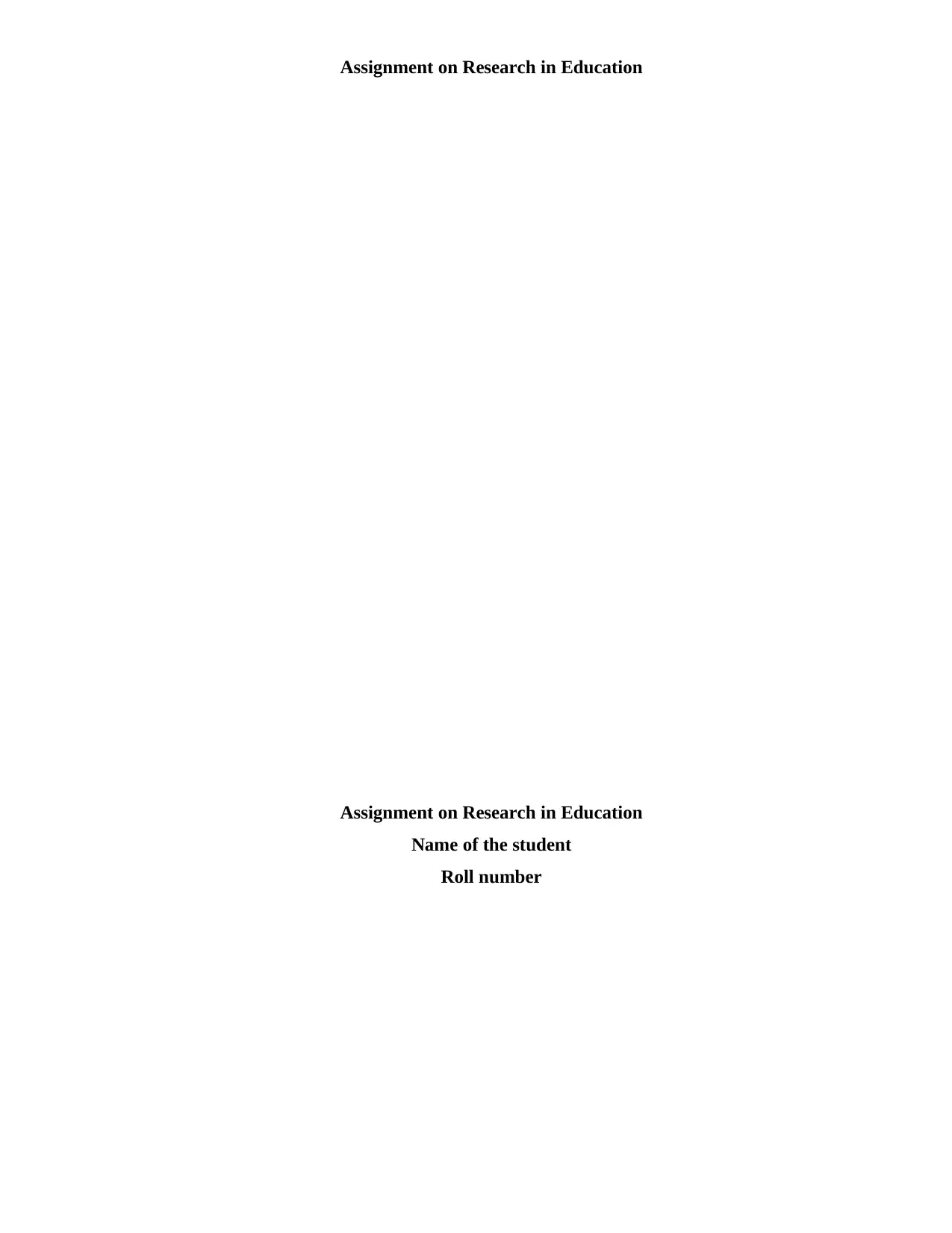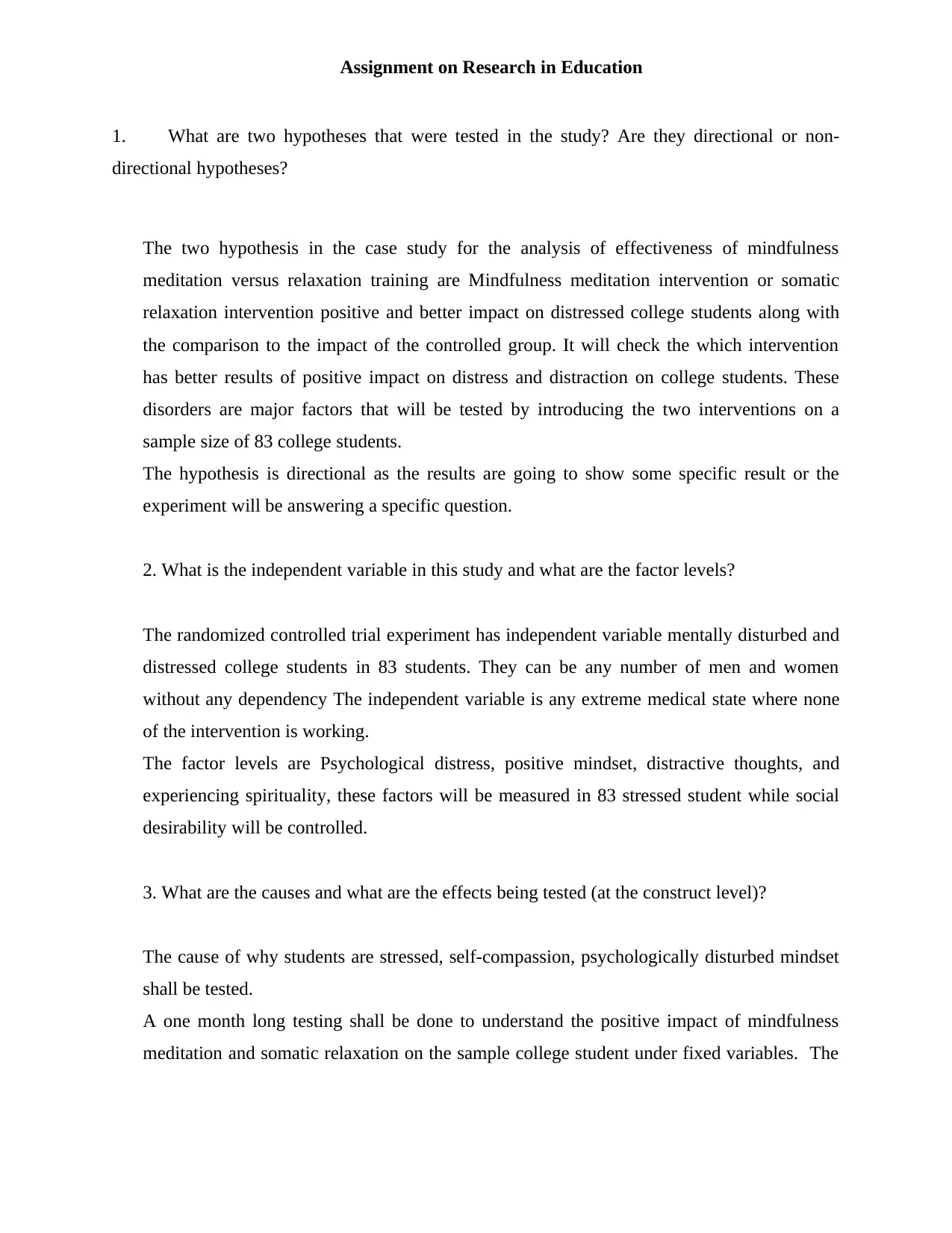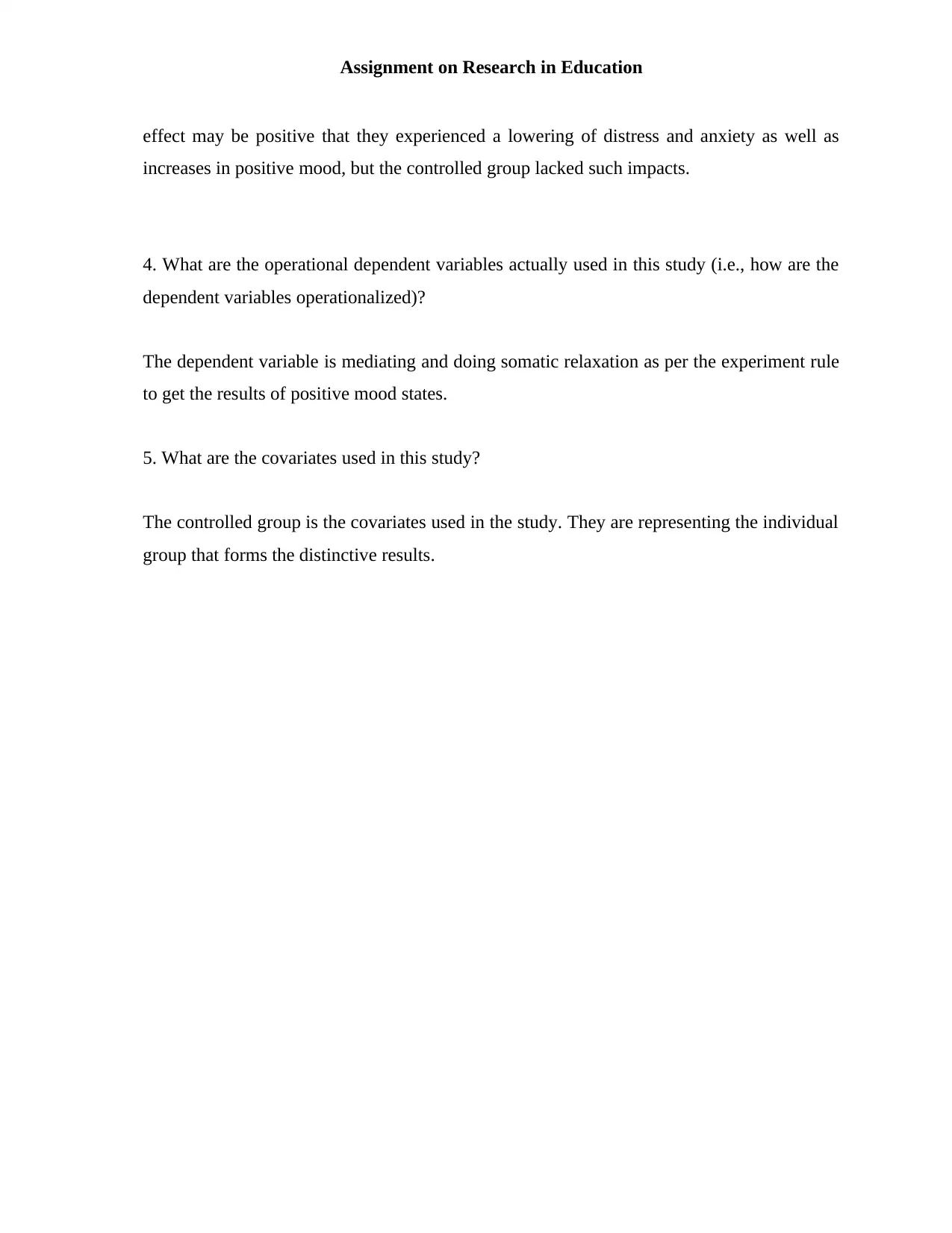Effectiveness of Mindfulness Meditation vs. Relaxation Training Study
VerifiedAdded on 2022/11/09
|3
|421
|25
Report
AI Summary
This report analyzes a study investigating the effects of mindfulness meditation and relaxation training on college students. The study examines the impact of these interventions on psychological distress, positive mood, and related factors. The research involved a sample of 83 college students, with one group undergoing mindfulness meditation and another receiving relaxation training, while a control group was also included. The independent variable is the intervention type, and the dependent variables are the changes in mood and distress levels. The study also considers covariates, specifically the control group, to compare and contrast the outcomes. The report highlights the hypotheses tested, the operationalization of variables, and the overall findings regarding the effectiveness of each intervention. The report concludes by mentioning the positive outcomes, such as a reduction in distress and an increase in positive mood, observed in the intervention groups compared to the control group.
1 out of 3






![[object Object]](/_next/static/media/star-bottom.7253800d.svg)